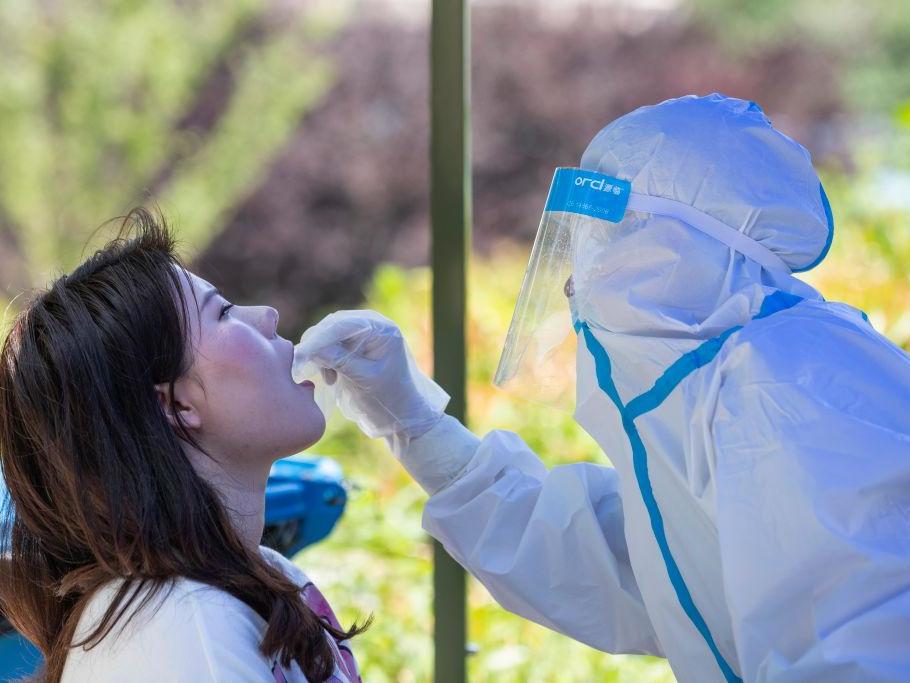The ability of coronavirus to hide in plain sight remains the biggest challenge
Analysis: Health correspondent Shaun Lintern looks at the latest developments to control the spread of Covid-19


If you plan on taking advantage of the relaxation in lockdown rules this weekend, you may be more at risk of meeting someone infected with the coronavirus.
Our individual risk is impossibly complex to calculate and depends on a huge number of variables unique to almost every one of us – and the risk is changing all the time, rising and falling, as the virus spreads and retreats across the country.
The key to keeping a lid on the virus is knowing where it is, how strong or prevalent it is in those areas, as well as who is infected and who else they have been in contact with.
The Office for National Statistics said yesterday that there were an estimated 25,000 new coronavirus infections a week between 14 and 27 June. Yet only about 5,000 are getting tests.
This is the big worry for public health chiefs trying to curtail the spread of the virus: its ability to hide in plain sight, with asymptomatic people spreading the disease without even being aware.
For those who do develop symptoms, they need to be tested and laboratories must be working efficiently and quickly. Data from the labs needs to be flowing smoothly not just to national bodies but to local areas too so they can rapidly respond as signals emerge. The test and trace system needs to be reaching 80 per cent of infected people and their contacts within 48 hours of symptoms starting.
At almost every step, while there has been progress, the system is still not working as well as it needs to. Given any chance, the virus will exploit weaknesses and have a resurgence as we have seen in Leicester this week, where lockdown has been reinstated.
The Independent has seen evidence from whistleblowers that staff at one of the government’s mega-labs have been sent home dozens of times in the past two months because of a lack of tests to process – while at the same time, the NHS and care home sectors are desperate to introduce regular mass testing to safeguard patients and residents.
Remember the warning from the World Health Organisation back in March to “test, test, test”.
Data has been withheld from local councils because of bureaucratic concerns that should have been rapidly dealt with at the start of the crisis.
All local authorities across England were only given access to detailed patient-level data from 22 June once they signed up to data protection principles. Health chiefs in Leicester were only able to access their data on the 25 June despite concerns being first raised by Public Health England 10 days earlier.
Public health directors in other areas that are on the infection watchlist, such as Bolton and Doncaster, say they do now have granular detail on what is happening. It remains to be seen how this affects local responses in the coming weeks.
The test and trace service is still not reaching 28 per cent of people who tested positive for the virus, leaving more than 1,300 people – and, more importantly, their contacts – at risk of spreading the disease.
Of those people who were listed as potential contacts at risk of infection, tracers failed to reach 14 per cent.
The test and trace service is yet to publish the full end-to-end performance and show whether it is hitting the target of 80 per cent of contacts being tracked down within 48 hours. However, data available for the first time on 24-hour turnaround for testing shows that there is still room for improvement.
In the week to 24 June, 28 per cent of test results were received after 24 hours of the test being taken, but 98 per cent were communicated to people within the next day, ie just over 24 hours.
Taken together, yesterday’s data on performance shows that the UK has yet to even get a grip of the problems it can easily see and there is much work still to do.
On top of those manifestly difficult challenges, the invisible spread of coronavirus in the community should give us all pause for thought as we look to the weekend and beyond.
Join our commenting forum
Join thought-provoking conversations, follow other Independent readers and see their replies
Comments